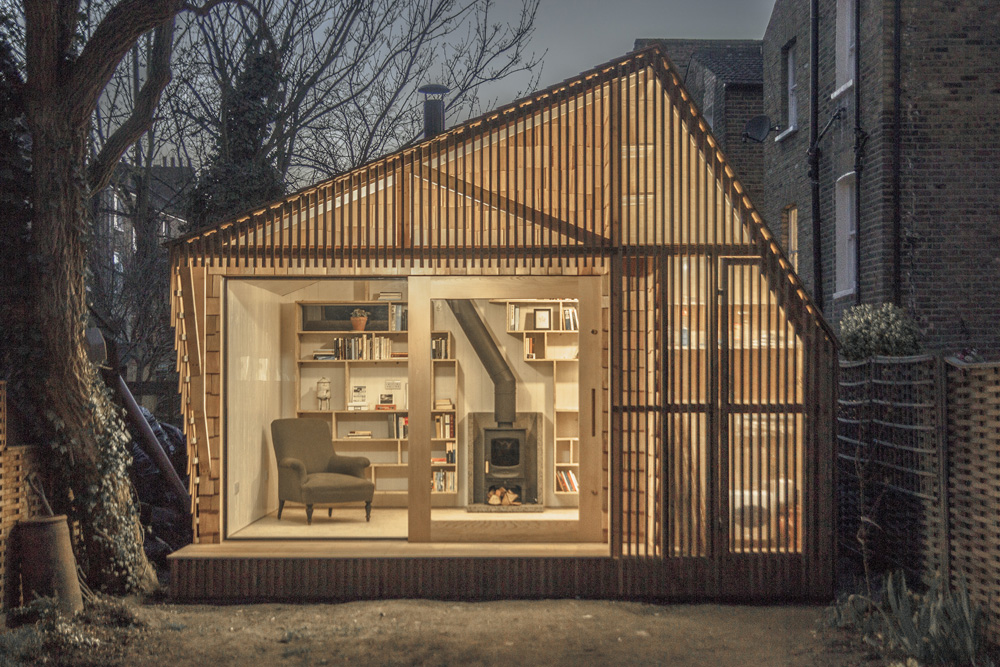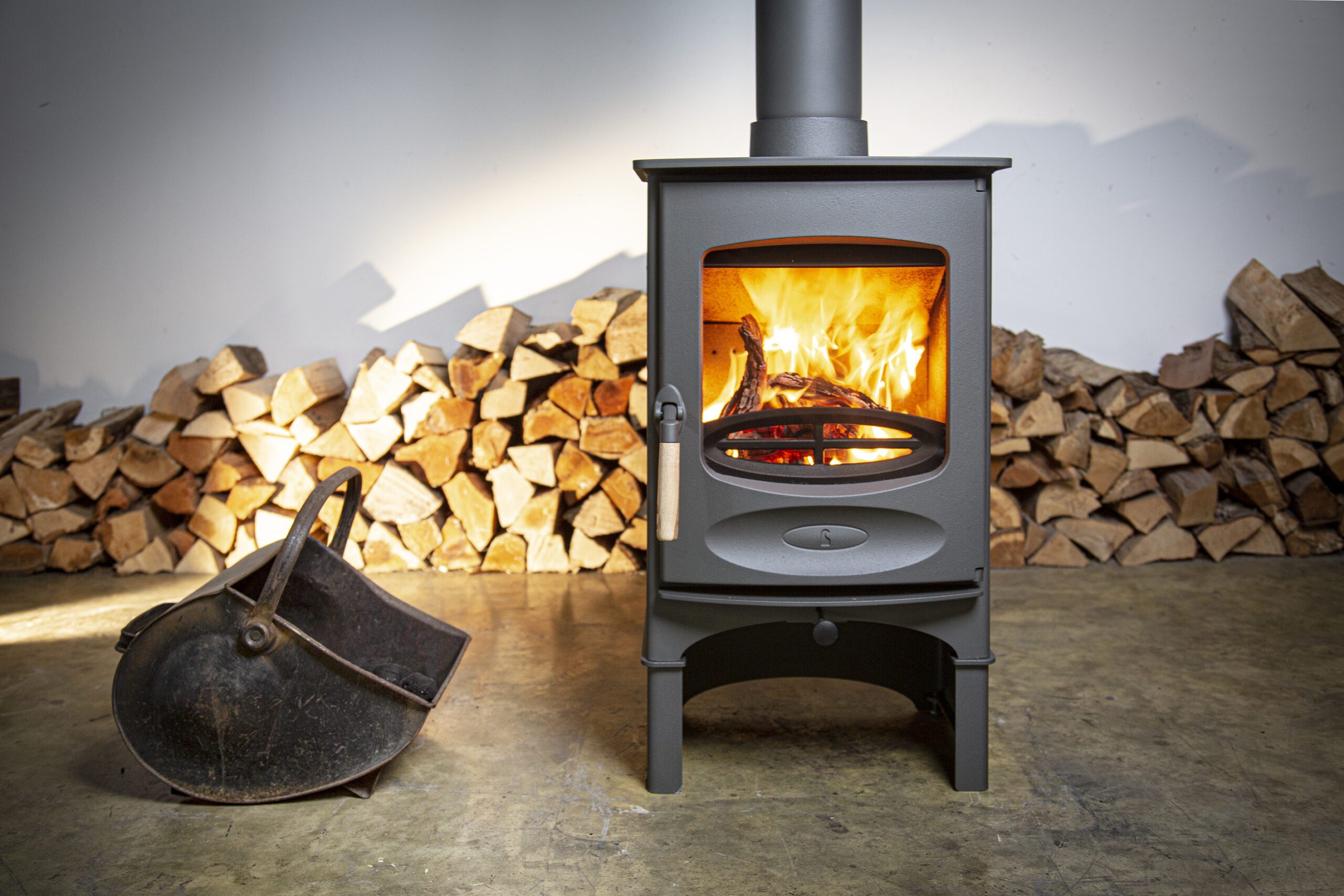If you’re looking to transform your shed into a cosy retreat or a functional workspace, a wood burning stove can be the perfect addition. Not only does it provide efficient heating during cold months, but it also brings a rustic charm and warm ambience to your shed space.
However, before embarking on the journey of installing a log burner in your shed, there are crucial aspects to consider. From regulations and safety requirements to cost estimates and proper sizing, this comprehensive guide is designed to equip you with all the essential information you need to make informed decisions and ensure a successful installation.
Can I install a log burner in my shed?
In short, yes. A wood burning stove can be a fantastic addition to a shed, providing warmth and comfort while also giving the space a cosy atmosphere. However, they need to be installed properly and you may be better off in the long run hiring a professional to do it.
Firstly, size does matter – your shed needs to be big enough to accommodate not only the log burner but also the space required between the burner and any combustible materials, which may include the shed’s walls!
As part of scoping out your shed’s suitability for housing a wood burning stove, check the materials used to construct it. Wooden sheds are common, but some materials might not be suitable for log burner installations due to fire safety concerns. You may be required to fit non-combustible surfaces around and behind the log burner to make it safe. Take a look at our stove pod or Vlaze wall and floor panels : Both of these offer a very practical solution.
You also need to make sure that your shed has proper ventilation. Combustion requires oxygen, and without sufficient airflow, the wood burning stove may not burn efficiently or could even become a safety hazard due to the build-up of carbon monoxide.
How much does it cost to install a wood burning stove in a shed?
The cost of installing a wood burning stove in a shed can vary depending on several factors, including the type of log burner, shed size, materials, and labour costs.
The price of the stove itself ranges from a few hundred to £1,500 or more, depending on the features. You’ll also need a flue pipe and a chimney installation. The cost of these components typically ranges from £150 to £500. Installing a non-combustible hearth beneath the stove is essential and can cost around £100 to £300.
Hiring a professional installer is highly recommended to ensure safety and compliance. Labour costs might range from £500 to £1000 or more, depending on the complexity of the installation. While this is a sizeable outlay, it could save you money overall.
Regulations for installing a wood burning stove in a shed
In the UK, installing a wood burning stove in a shed is subject to a number of safety guidelines.
There must be a safe distance between the wood burning stove and any combustible materials like wood, plastic, or insulation. Typically, the required distance is 60cm from the sides and 80cm from the front of the stove. There isn’t a legal minimum requirement so these distances vary by model and manufacturer.
The chimney height should conform to specific requirements, usually at least 4.5 meters from the top of the stove to the flue exit point. The chimney should use an appropriate flue liner to ensure the safe passage of smoke and gases.
A carbon monoxide detector must be installed in the shed to alert occupants if there is a potential build-up of this harmful gas.
The installation should be carried out by a qualified and registered professional who is familiar with building regulations and safety standards.

Does dampness affect the appliance?
Yes, dampness can impact the efficiency and safety of the log burner. Moisture can affect the structural integrity of the stove and its components. Additionally, damp wood can lead to incomplete combustion, producing excess smoke, creosote, and harmful gases.
To prevent dampness from affecting the appliance:
• Use only well-seasoned firewood with a moisture content of around 20% or less – dry firewood burns more efficiently and produces less smoke.
• Store firewood off the ground and protect it from rain and snow by using a woodshed or covering.
• Ensure your shed has adequate ventilation to allow for proper air circulation. Good ventilation helps to prevent moisture buildup inside the shed.
• Invest in a moisture meter to regularly check the moisture content of your firewood.
• Clean your wood burning stove and flue regularly to remove any accumulated ash, debris or creosote.
• Install a chimney cap on top of the flue to protect it from rainwater and debris
• Regularly inspect the roof, chimney, and flue for any signs of leaks. Address any issues promptly to prevent water from entering the shed and affecting the wood burning stove.
• If possible, position the log burner away from potential sources of dampness, such as leaky windows or doors, or anywhere water might drip onto it.
• In cases where dampness is a persistent issue, consider using a dehumidifier inside the shed. A dehumidifier helps to reduce excess moisture in the air and creates a drier environment.
Best Wood burning Stove Sizes
The best size will depend on your shed’s dimensions and insulation levels. A stove that is too large may overheat the space, while one that is too small may not provide sufficient heat. To determine the best size, calculate the cubic meters of the shed by multiplying the length, width, and height, and take note of your shed walls’ thickness and composition. Then, consult a specialist; they’ll be able to recommend a stove size based on your shed’s measurements and insulation.
Sealing a Roof When Installing a Wood burning Stove
Properly sealing the roof where the flue penetrates is crucial to prevent leaks and maintain the shed’s weather resistance. Install a flue pipe collar around the flue pipe where it exits the roof, then use a weatherproof sealant to fill any gaps or joints. This provides a watertight seal and prevents water from entering the shed.
Always consider hiring a professional roofer or installer to ensure the roof sealing is done correctly and complies with building regulations. Remember to check and comply with local regulations and obtain necessary permits before installing a wood burning stove in your shed. Safety should always be the top priority, and professional installation is highly recommended.
Why Choose Us?
We’ve been committed to providing quality wood burning stoves since 1972 and we know all there is to know about wood burners, wherever they’re installed. If you have any questions about heating your home with a wood burning stove, please get in touch.

